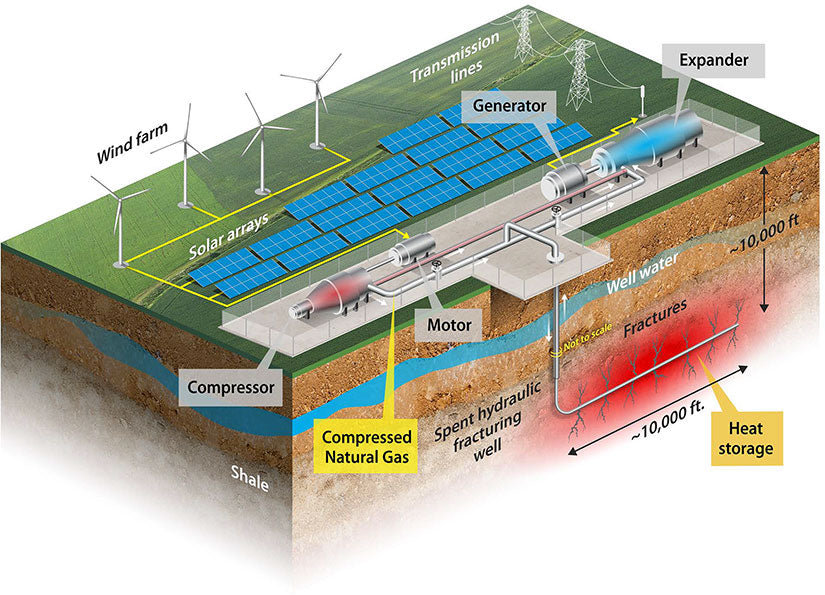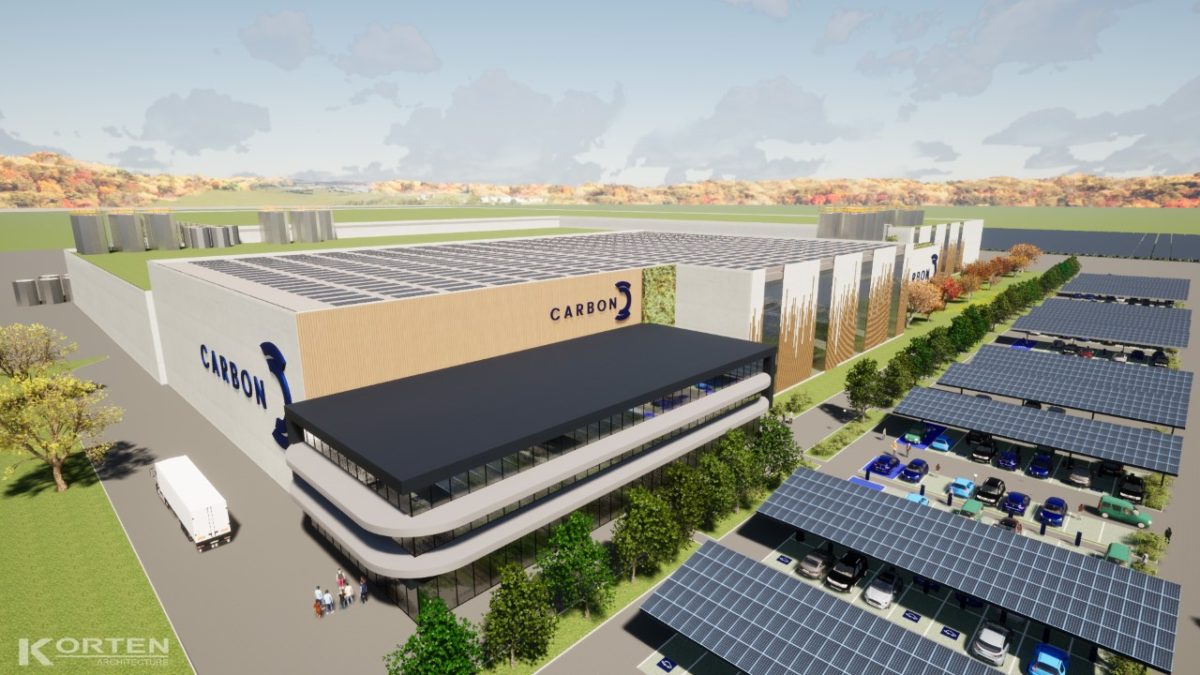https://www.pv-magazine-australia.com/2022/04/13/storing-renewables-in-depleted-oil-and-gas-wells/

NREL
From pv magazine Global
Researchers from the US Department of Energy’s National Renewable Energy Laboratory (NREL) are proposing the use of horizontal gas and oil wells to store renewable energy via compressed natural gas.
The scientists initially considered injecting renewable-powered compressed air into old wells, but they chose natural gas because of its compatibility with existing reservoirs.
“We want to start the program with natural gas because it’s easy and I think the people who own the wells, they’d get on board a lot easier,” said NREL researcher David Young. “Eventually, as you prove out the idea, you gradually shift over to a different gas to run the system. CO2 would work. Nitrogen would work. Hydrogen. If you use CO2 that could also be part of a carbon-capture cycle.”
In particular, the US group recommended hydraulically fractured (“fracked”) projects, which account for about 75% of all newly drilled wells in the United States. “The number of active horizontal wells has jumped from about 9,000 in 2,000 to more than a quarter-million in 2017,” said NREL.
The academics evaluated the potential storage of large-scale renewables capacity as compressed natural gas, to be released to spin an electrical generator when electrical demand is high. They described their findings in “Electrical energy storage using compressed gas in depleted hydraulically fractured wells,” which was recently published in iScience. They referred to their technology as “REpurposed FRAcked wells for Energy Storage” (REFRAES).
They proposed the use of unconventional shale and tight sandstone dry gas wells that have been fracked and depleted. Renewable energy could be used to compress natural gas for storage in the wells. The heat generated by the compression process could also be stored for later use.

“The ability to predict and control injection and production of natural gas into and from a shale reservoir through a hydraulically fractured well is one of the most important and challenging aspects of the REFRAES concept,” they emphasised, noting that the shale wells must be able to sustain gas flow rates of several million standard cubic feet per day. “The gas injection occurs near the natural reservoir temperature, pressure, and flow rate, so reservoir deterioration is unlikely.”
The proposed energy storage cycle model is expected to be implemented in four phases: an injection phase, a storage phase, an electricity production phase, and a recovery period. During the recovery period, the well is shut in. The research group assumed that each of these phases would be equal in time duration, although the scheme might not be the most efficient way to cycle the reservoir.
The scientists chose two different configuration for short-term or long-term storage. For the first one, the cycle takes 24 hours to complete, with each phase lasting six hours. For the second option, each phase lasts 90 days and the entire cycle takes 360 days. “These are arbitrary storage cycles chosen for convenience. Actual storage and production durations will be market-driven,” they said.
Through their analysis, the scientists found that these storage facilities may achieve a round-trip storage efficiency of between 40% and 70% depending on the natural reservoir temperature. They said renewables stores in wells may also achieve a levelised cost of storage (LCOS) ranging from US$70 and US$270/MWh, a value which they describe as on par with pumped hydro storage. They also estimated that these facilities may be built at a cost of $1,000 to $3,500 per kilowatt installed.
“The low LCOS values are due to the reuse of existing infrastructure, including a de-risked reservoir, low capital expenditures for additional needed equipment, and utilising the geothermal energy of the reservoir to maintain the thermodynamic state of the compressed gas,” the scientists concluded. “In all, REFRAES is shown to be a viable technology for energy storage with high RTE, low LCOS, and ability to be expanded in scale to meet grid-scale storage needs.”
This content is protected by copyright and may not be reused. If you want to cooperate with us and would like to reuse some of our content, please contact: editors@pv-magazine.com.
<




